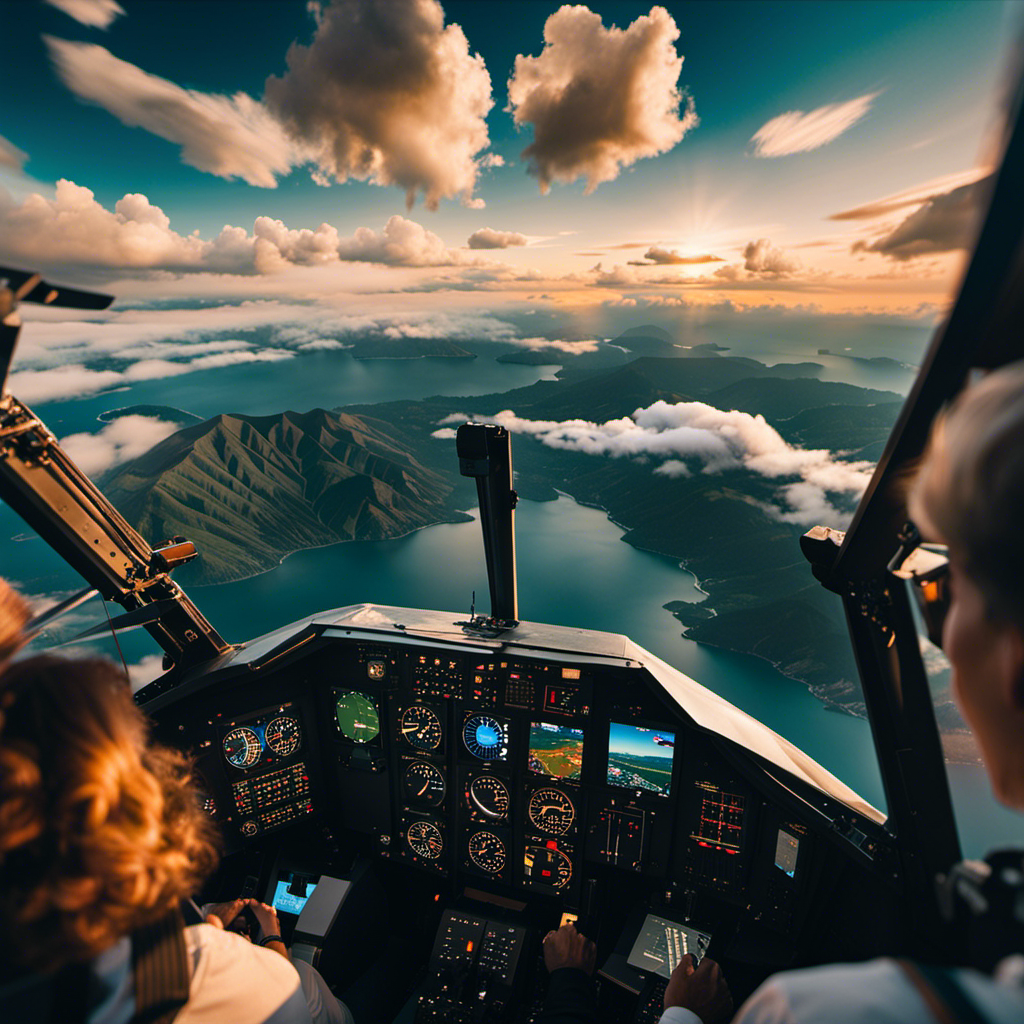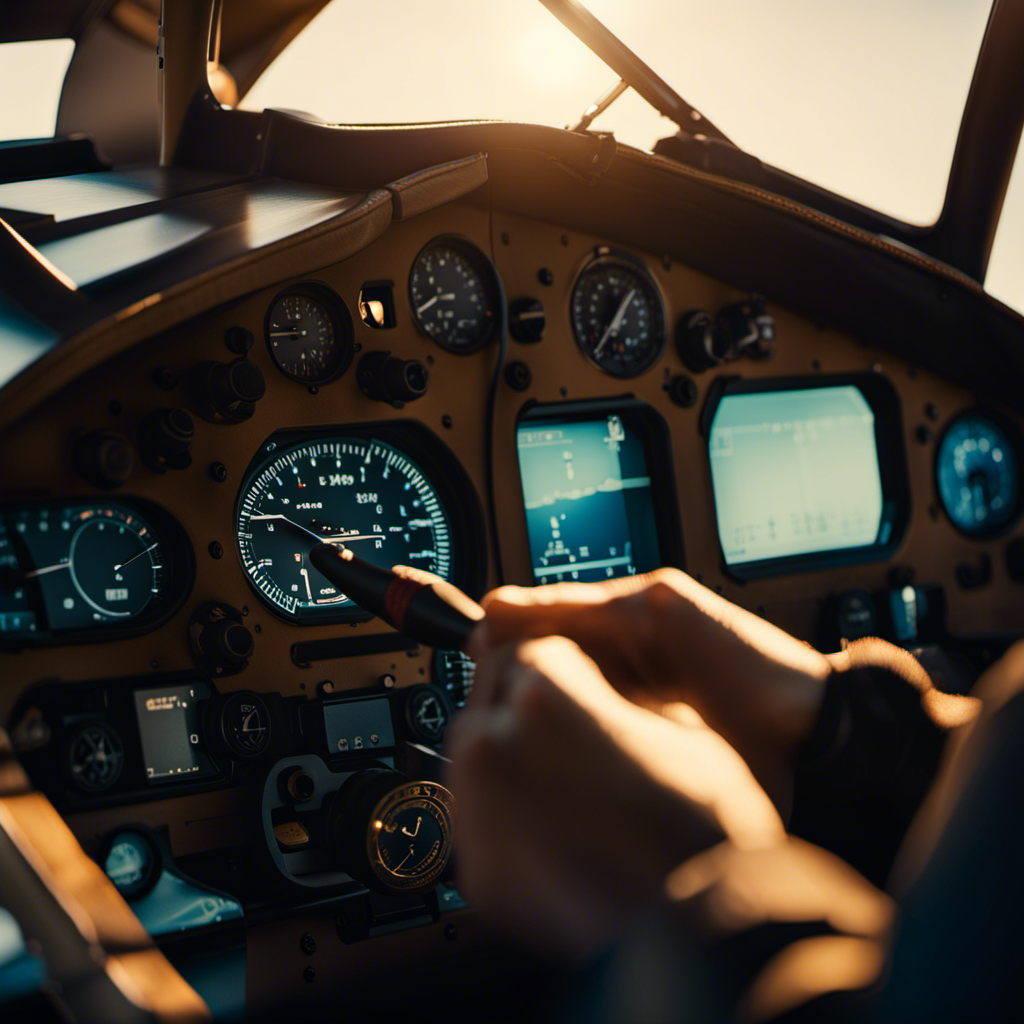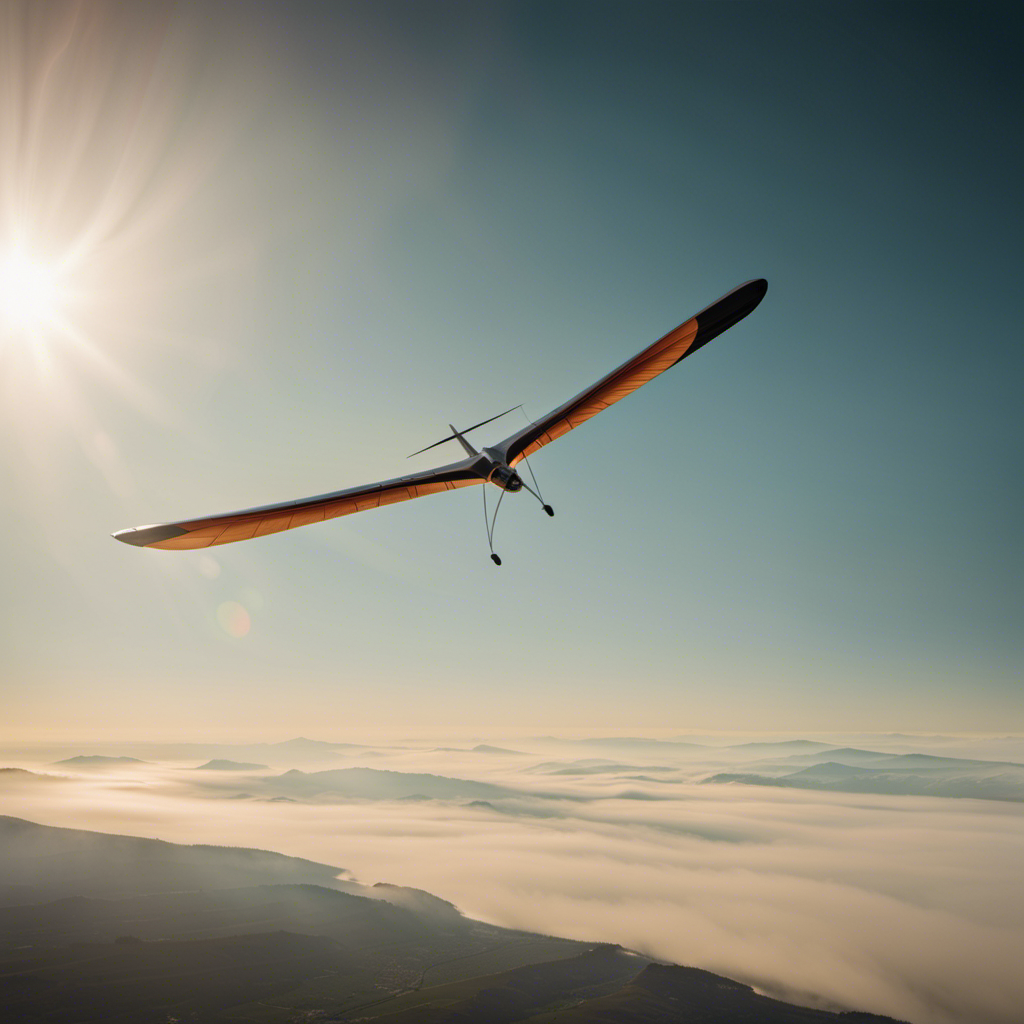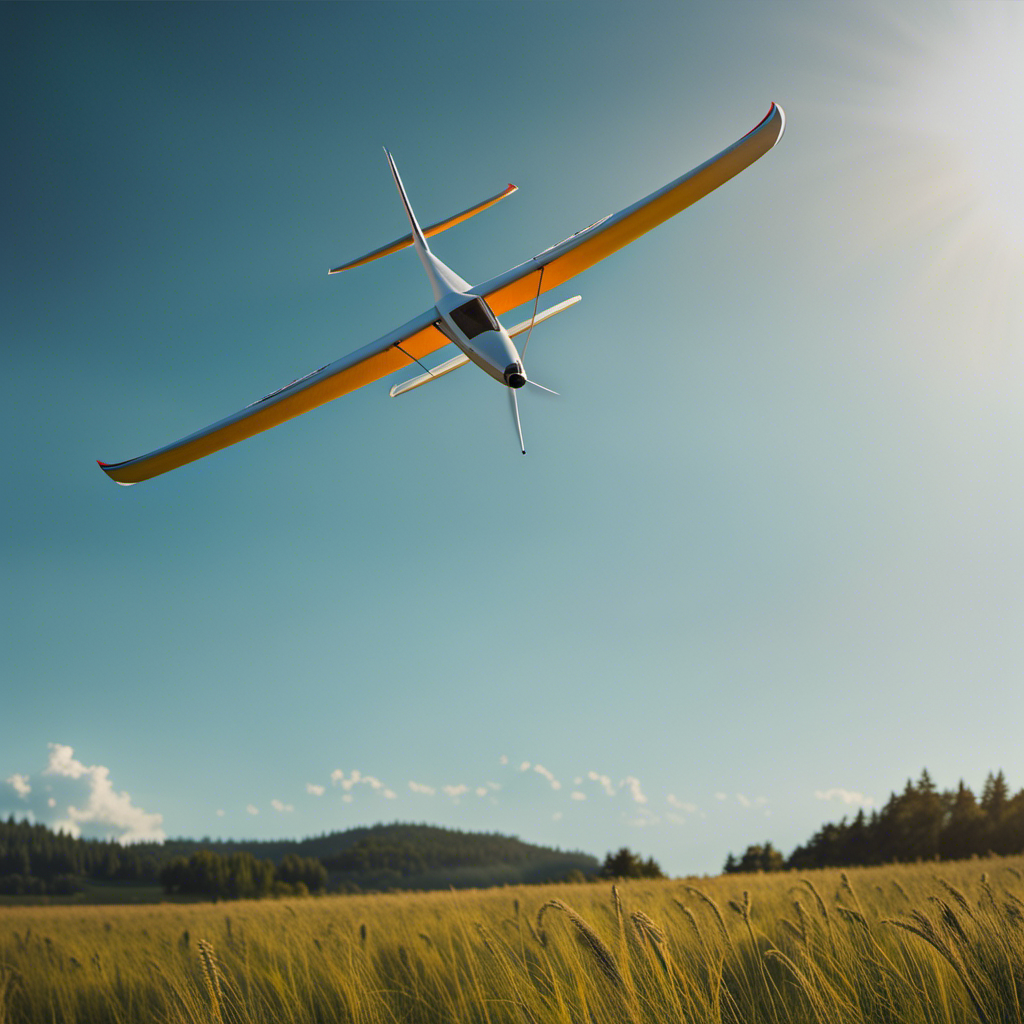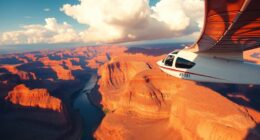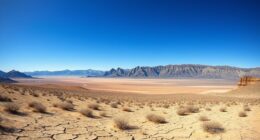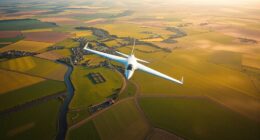As an aviator, I am afforded the rare opportunity to view the world from a vantage point not many can claim to experience. From my seat in the cockpit, a dynamic panorama unfurls beneath me, presenting awe-inspiring sights that continually astonish me. Be it the splendid mountain ranges, the sparkling urban lights after dusk, or the captivating coastline, every journey in the skies reveals its unique marvels.
Join me as I take you on a journey through the eyes of a pilot and explore the incredible sights that await us in the skies.
Key Takeaways
- Pilots see breathtaking natural wonders from the air, such as waterfalls, fall foliage, canyons, beaches, and snow-capped peaks.
- Weather navigation is of utmost importance for pilots, as they need to be prepared for different weather conditions and rely on weather reports, forecasts, radar, and communication with air traffic control for accurate navigation and separation from other aircraft.
- Adverse weather conditions, like thunderstorms and heavy fog, pose challenges for pilots, who must maintain situational awareness, constantly monitor weather conditions, communicate with air traffic control, and follow specific procedures to avoid hazardous weather.
- Flight safety measures, including weather reports, forecasts, onboard radar, communication with air traffic control, and adherence to specific procedures, are crucial for safe and efficient flights. Pilots rely on instruments, weather reports, forecasts, onboard radar, and communication with air traffic control to maintain situational awareness and make informed decisions.
The Changing Landscape from Above
As I fly above, I notice the changing landscape below me.
One striking feature is the phenomenon of urban sprawl. From up here, I can see how cities have expanded and spread out, consuming vast areas of land. The grid-like patterns of streets and buildings are evident, showcasing the development and growth of urban areas.
On the other hand, I also observe the agricultural patterns that dot the landscape. Fields stretch out like a patchwork quilt, with different crops planted in neat rows. It’s fascinating to see how humans have transformed the land for both urban and agricultural purposes.
And as I continue my journey, the changing landscape transitions into spectacular mountain views, offering a breathtaking sight that contrasts with the urban and rural scenes below.
Spectacular Mountain Views
When flying, I can’t help but be awestruck by the spectacular mountain views. The sight of towering mountain peaks stretching as far as the eye can see is truly breathtaking. As a pilot, I often have the opportunity to capture these magnificent landscapes through aerial photography.
The unique perspective from above allows me to capture the grandeur and beauty of the mountains in a way that is not possible from the ground. The rugged terrain, the sharp edges of the peaks, and the vastness of the mountain ranges are all elements that make for stunning photographs.
But as captivating as the mountains are, there is another sight that never fails to mesmerize me: the sparkling city lights at night.
Sparkling City Lights at Night
You can’t help but be mesmerized by the sparkling city lights at night. As a pilot, flying over urban skylines provides a unique perspective on these breathtaking nighttime panoramas.
The city below transforms into a sea of shimmering lights, creating a captivating display of human activity and creativity. From above, the intricate patterns and formations of buildings, roads, and landmarks become evident, showcasing the urban landscape in all its glory. The lights seem to dance and twinkle, illuminating the darkness and giving life to the city below.
But as stunning as the city lights may be, there is another aspect of flying that never fails to amaze me – the transition from the urban jungle to the tranquil coastal scenery and beautiful beaches that lie beyond.
Coastal Scenery and Beautiful Beaches
The transition from the bustling city to the serene coastal scenery and stunning beaches is truly remarkable. As a pilot, I have the privilege of witnessing this breathtaking transformation from above.
Here are four awe-inspiring features that catch my eye:
-
Hidden Coves: From up high, I can spot secluded coves tucked away along the coastline, their crystal-clear waters glistening in the sunlight.
-
Remote Islands: Flying over the coast reveals remote islands, untouched by human development. These pristine pieces of land stand out against the vast blue ocean.
-
Sandy Beaches: The beaches that stretch along the coast are a sight to behold. The white sand contrasts beautifully with the deep blue hues of the ocean, creating a picture-perfect scene.
-
Turquoise Waters: The coastal waters exhibit a mesmerizing shade of turquoise. The clarity and vibrancy of the water are truly captivating.
As my plane glides over these stunning coastal landscapes, I can’t help but anticipate the thrilling aerial wildlife encounters that await me.
Aerial Wildlife Encounters
From your vantage point in the sky, you’ll be amazed by the diverse range of wildlife that can be spotted amidst the coastal landscapes. As a pilot, I have had my fair share of aerial encounters with various animals while flying. It is crucial for pilots to be aware of the potential risks these encounters pose to aviation safety, especially when it comes to bird strikes. To give you an idea of the types of wildlife we may encounter, here is a table showcasing some common animals spotted from the cockpit:
| Animal | Size | Behavior |
|---|---|---|
| Seagulls | Small | Flying in groups near shores |
| Pelicans | Medium | Gliding above water |
| Dolphins | Large | Swimming alongside aircraft |
| Whales | Massive | Breaching the surface |
| Sea turtles | Varies | Popping up for air |
These encounters can be breathtaking, but pilots must remain vigilant to avoid bird strikes and ensure aviation safety. Now, let’s shift our focus to another fascinating aspect of the sky: cloud formations.
Fascinating Cloud Formations
Take a moment to appreciate the beauty of the various cloud formations that can be seen while soaring through the sky. As a pilot, I am constantly amazed by the incredible atmospheric phenomena and striking cloud formations that I encounter during my flights. Here are some of the most fascinating cloud formations I’ve witnessed:
-
Cumulus clouds: These fluffy, white clouds are like cotton balls suspended in the sky, often indicating fair weather conditions.
-
Cirrus clouds: Delicate and wispy, these high-altitude clouds are composed of ice crystals and can form beautiful patterns, resembling feathers or mare’s tails.
-
Stratocumulus clouds: These low-lying clouds appear as a layer of puffy, grayish-white clouds that can stretch across the horizon.
-
Lenticular clouds: Shaped like saucers or UFOs, these stationary clouds are often found near mountains and are a captivating sight to behold.
The ever-changing and mesmerizing cloud formations are just the beginning of the breathtaking sights that pilots get to witness. From here, let’s explore the awe-inspiring world of majestic sunrises and sunsets that paint the sky with vibrant hues.
Majestic Sunrises and Sunsets
Witnessing the vibrant hues of majestic sunrises and sunsets is truly a breathtaking experience. As a pilot, I am fortunate to have the opportunity to witness these natural wonders from a unique vantage point. The sky transforms into a canvas of vibrant colors, painting a mesmerizing picture that words cannot fully capture. It is during these peaceful moments that I am reminded of the beauty and vastness of the world we live in. The table below is a small attempt to convey the emotions and sensations that arise when gazing at the sky during sunrise and sunset:
| Emotion | Sensation |
|---|---|
| Awe | Glimmering rays of light piercing through the clouds |
| Serenity | Warmth enveloping the surroundings |
| Wonder | Tranquil stillness and a sense of time standing still |
Transitioning from the serene beauty of sunrises and sunsets, let me now take you on a journey through the exhilarating experience of flying over iconic landmarks.
Flying Over Iconic Landmarks
As you soar through the sky, you’ll be captivated by the breathtaking views of iconic landmarks below. When flying over historical sites and architectural marvels, pilots are treated to a unique perspective that few get to experience. From the cockpit, I have had the privilege of witnessing the grandeur of historical monuments and famous buildings.
The intricate details of ancient structures, the symmetry of modern wonders, and the sheer scale of these landmarks are truly awe-inspiring. From the Eiffel Tower to the Great Wall of China, flying over these iconic sites offers a fresh vantage point that showcases their magnificence.
But the wonders of the world aren’t limited to man-made structures alone. Transitioning into the subsequent section, the unique perspectives of natural wonders reveal a whole new dimension of beauty.
Unique Perspectives of Natural Wonders
From your seat in the airplane, you’ll be amazed by the stunning views of natural wonders that unfold before your eyes. As a pilot, I have had the privilege of witnessing these breathtaking spectacles firsthand. Here are some of the unique perspectives I’ve encountered:
- Breathtaking waterfalls cascading down rugged mountains, their mist glistening in the sunlight.
- Vibrant fall foliage painting the landscape with a dazzling array of oranges, reds, and yellows.
- Majestic canyons carved by millennia of flowing rivers, revealing nature’s incredible power.
- Pristine white sand beaches stretching for miles, meeting crystal clear turquoise waters.
- Towering snow-capped peaks reaching towards the heavens, creating a breathtaking backdrop.
These awe-inspiring views remind me of the beauty and wonder of our planet. They also serve as a reminder of the importance of navigating through different weather conditions, which I will discuss in the next section.
Navigating Through Different Weather Conditions
As a pilot, it is vital to be prepared for navigating through different weather conditions. Flight safety measures and air traffic control procedures play a crucial role in ensuring a safe and efficient flight.
When faced with adverse weather, such as thunderstorms or heavy fog, pilots rely on various instruments and procedures to maintain situational awareness and make informed decisions. Before takeoff, we carefully review weather reports and forecasts to anticipate any potential challenges along our route.
During the flight, we constantly monitor weather conditions through onboard radar and communicate with air traffic control for up-to-date information and guidance. In situations where visibility is reduced, we rely on instrument flight rules (IFR) to navigate accurately and maintain separation from other aircraft.
Additionally, we follow specific procedures, such as holding patterns or diversions, to avoid hazardous weather and ensure the safety of our passengers and crew.
Frequently Asked Questions
How do pilots navigate through different weather conditions?
When navigating through different weather conditions, pilots rely on their instruments and training. They use radar and other tools to anticipate turbulence and adjust their flight path accordingly. In low visibility, they follow specific procedures to ensure a safe landing.
What are some unique perspectives of natural wonders that pilots get to see?
From a pilot’s perspective, the world transforms into a breathtaking canvas of natural wonders. With a bird’s eye view, we witness the grandeur of mountains, the intricacy of coastlines, and capture stunning aerial photography that unveils nature’s hidden beauty.
Do pilots encounter any aerial wildlife during their flights?
During flights, pilots often engage in aerial birdwatching and encounter various wildlife. These encounters provide a unique perspective on the natural world, allowing pilots to witness animals in their natural habitats from an aerial viewpoint.
How do pilots handle flying over iconic landmarks?
When flying over historical sites, pilots face the challenges of navigating crowded cities and maintaining a safe distance from landmarks. It requires precise communication with air traffic control and vigilant monitoring of the aircraft’s position.
What are some fascinating cloud formations that pilots often come across during their flights?
During my flights, I often come across unique cloud formations that never fail to amaze me. From fluffy cumulus clouds to dramatic thunderstorms, each formation tells a story. And the spectacular sunset views? Simply breathtaking.
Conclusion
In conclusion, flying as a pilot offers breathtaking views and unique experiences that can only be truly appreciated from above.
Imagine soaring through the sky, witnessing the sun setting over a tranquil ocean, casting vibrant hues across the horizon. Or picture flying over the majestic snow-capped peaks of the Rocky Mountains, feeling a sense of awe and wonder. These are just a few examples of the incredible sights that pilots are privileged to witness on a regular basis.
So, if you ever have the chance to take to the skies, seize it, and prepare to be amazed.
